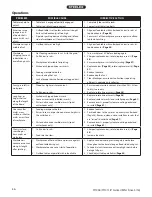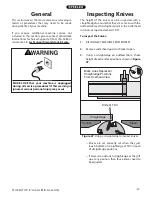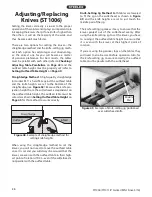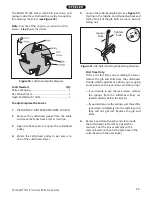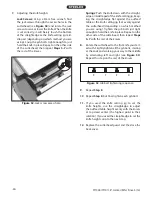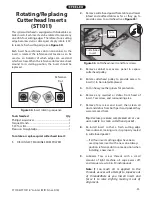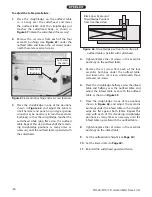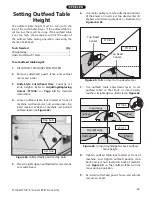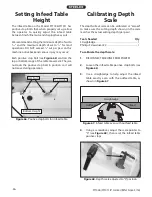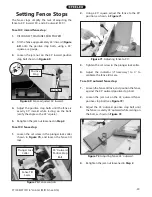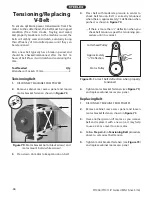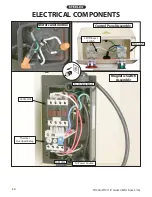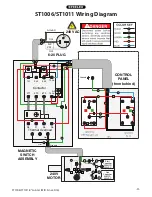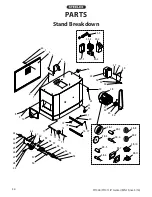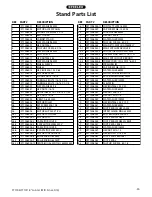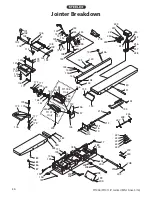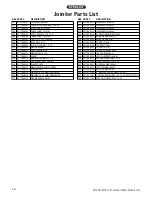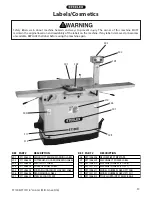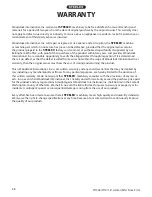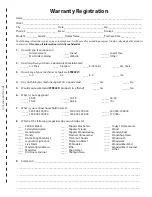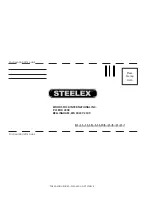
-48-
ST1006/ST1011 8" Jointer (Mfd. Since 3/16)
Tensioning/Replacing
V-Belt
Figure
73
. Motor bracket bolts (black arrows) and
motor mount bolts (white arrows).
To ensure optimum power transmission from the
motor to the cutterhead, the belt must be in good
condition (free from cracks, fraying and wear)
and properly tensioned.
As the machine is used, the
belts will slightly wear and stretch, eventually losing
their efficiency of transmitted power until they can
be retensioned.
Also, a new belt typically has a break-in period, and
should be checked/retensioned after the first 16
hours of belt life, as it will stretch and seat during this
time.
Tool Needed
Qty
Wrenches or Sockets 13mm ............................................. 2
Tensioning Belt
1. DISCONNECT MACHINE FROM POWER!
2. Remove cabinet rear access panel and loosen
motor bracket fasteners shown in Figure 73.
3. Press down on motor to keep tension on belt.
Motor Pulley
Approximately
1
/
4
" Deflection
Cutterhead Pulley
Figure 74.
Correct belt deflection when properly
tensioned.
Replacing Belt
1. DISCONNECT MACHINE FROM POWER!
2. Remove cabinet rear access panel and loosen
motor bracket fasteners shown in Figure 73.
3. Have another person lift motor as you remove
belt and replace it with a new one. It may help
to use a 2x4 as a lever to raise motor.
4. Follow
Steps 4–5 in Tensioning Belt procedure
above to set correct belt tension.
5. Tighten motor bracket fasteners (see Figure 73)
and replace cabinet rear access panel.
4. Press belt with moderate pressure in center to
check belt tension. Belt is correctly tensioned
when there is approximately
1
⁄
4
" deflection when
pushed, as shown in Figure 74.
—If there is more than
1
⁄
4
" deflection when you
check belt tension, repeat the tensioning pro-
cedure until it is correct.
4. Tighten motor bracket fasteners (see Figure 73),
and replace cabinet rear access panel.



